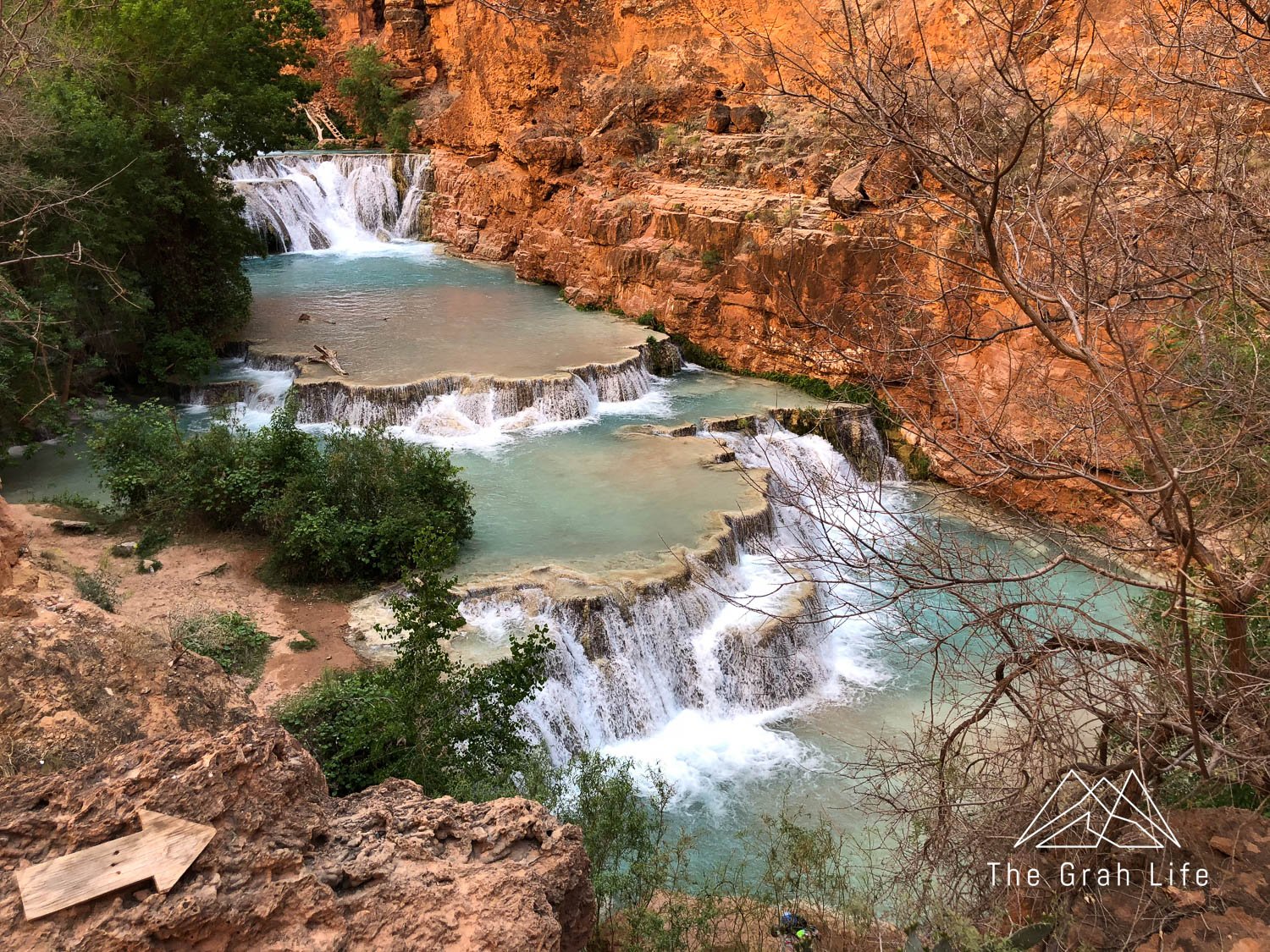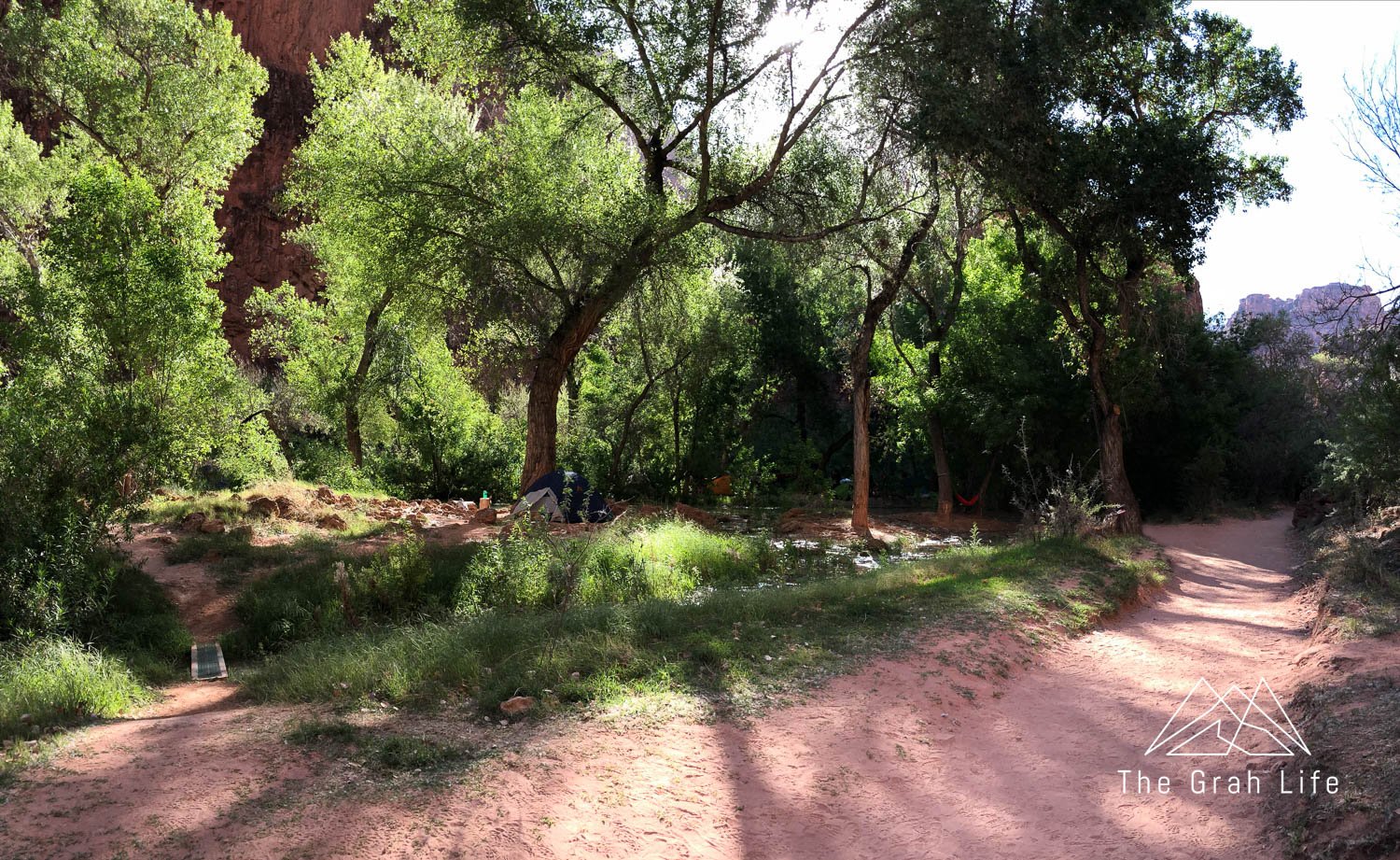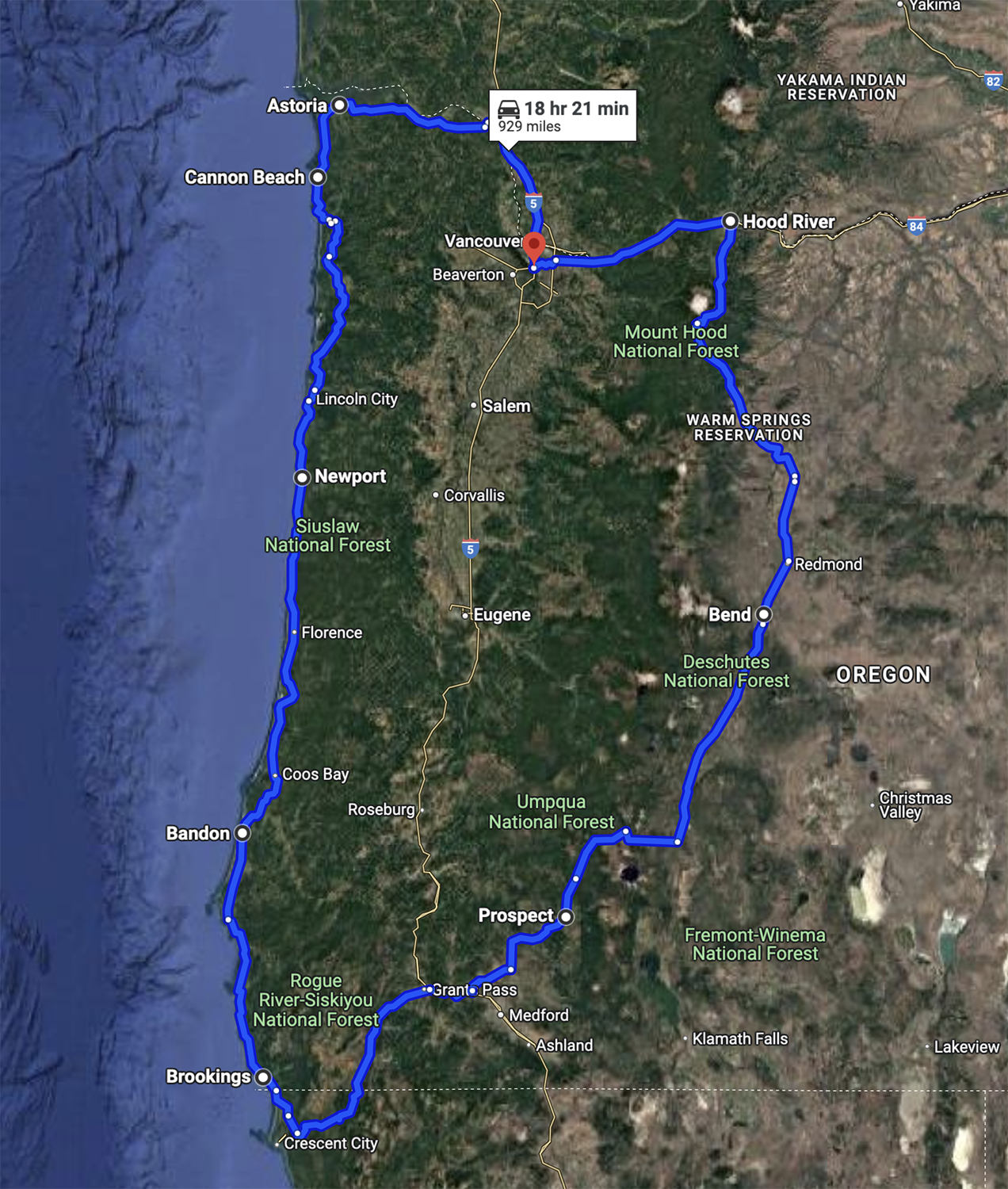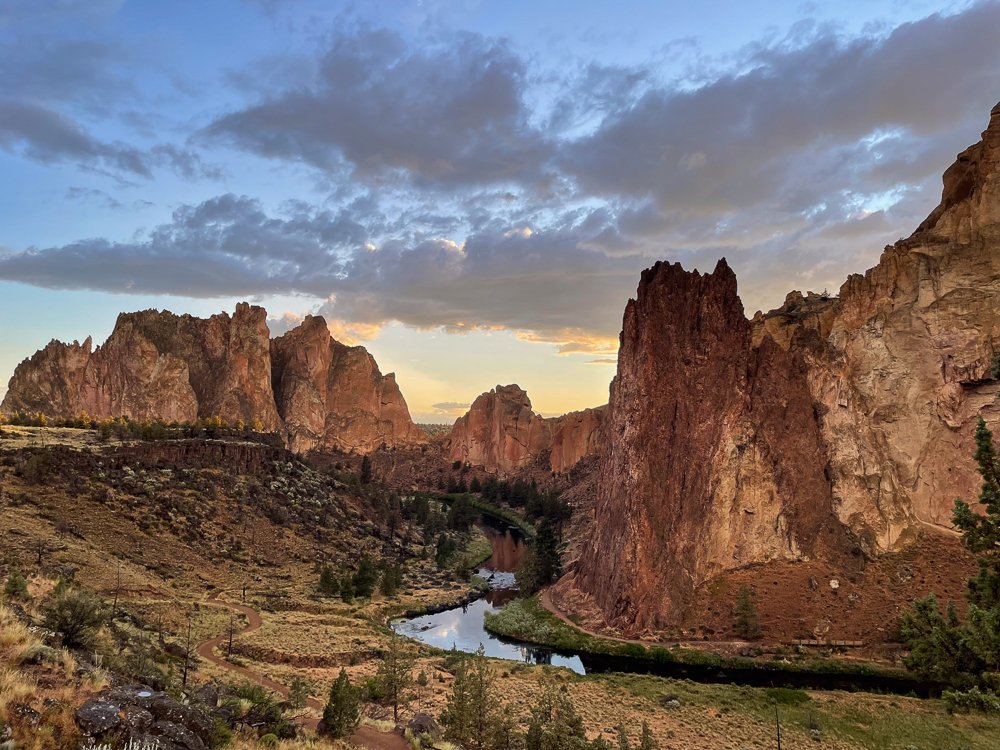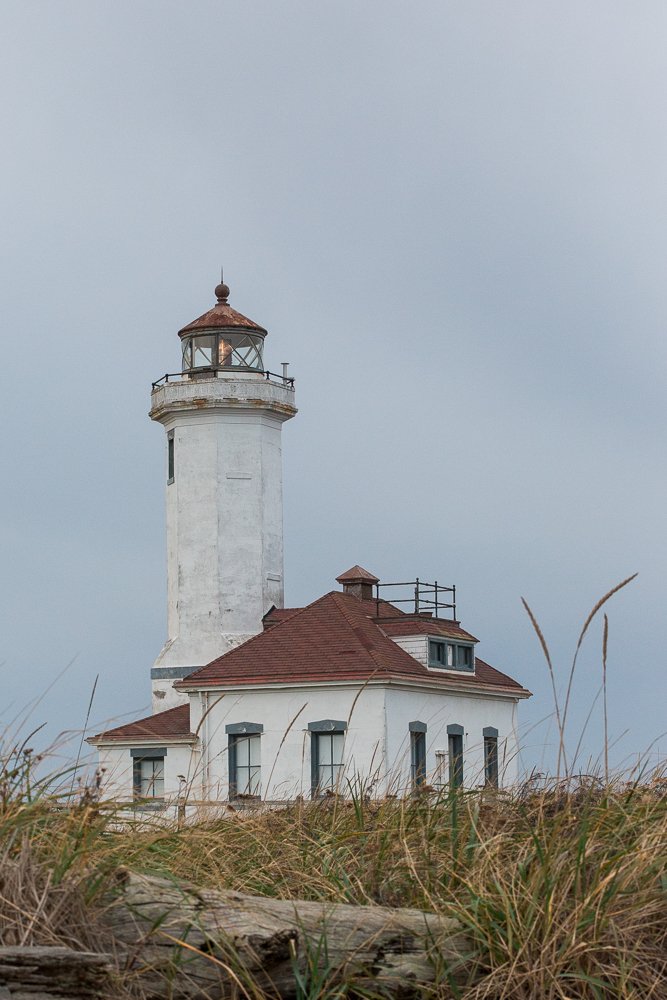The Complete Guide to Visiting Havasupai Falls in 2025
Hiking to Havasupai Falls is a once-in-a-lifetime experience. You’ll get to trek through the Grand Canyon, swim in turquoise waters, and see five incredible waterfalls. That is, if you can get a permit.
Want to skip ahead? Click on the links below to jump to a section.
Havasupai hike and permit details
How hard is the hike to Havasupai Falls?
The Hualapai Hilltop Trailhead
Disclosure: We’ve included affiliate links with recommended hiking gear in this post. If you click through and buy something, we’ll receive a small portion of that sale. You won’t be charged more, and we haven’t been paid by any of these retailers to share their information. These are all our genuine preferences.
Havasupai Tribe
The Havasupai Tribe is known as the Havasu ‘Baaja, meaning “people of the blue-green waters,” and they have lived in this region for more than 1,000 years. Historically, they migrated between Havasu Canyon, in the Grand Canyon, to as far south as Bill Williams Mountain, and as far east as the Little Colorado River. That’s tens of thousands of acres where they farmed and moved according to the seasons (source).
In 1880, the Havasupai Reservation was founded (source). They were confined to 518 acres in Havasu Canyon, a small portion of their ancestral home. In 1975, Congress returned 185,000 acres of canyon and rim territory to the Havasupai Tribe. In the time between, the Havasupai had to adjust to their environment, counting more on farming, wage labor, and tourism for survival.
If you’re interested in learning about Havasupai legends, check out this page.
Havasupai hike details
Trail description: Alltrails
Miles: 8 miles to Supai village, 2 additional miles to the campground
Elevation gain: 2,158 feet
Open to hiking: Daily, starting at 4 a.m.
Water access: None; carry a minimum of one gallon (3.5 liters) of water per person
Permits required: Yes
Pet friendly: No
Permits
You’re required to purchase permits PRIOR to visiting Havasupai Falls. We’ve got another blog outlining the permit process, but in short, they’re highly sought after.
Check-in
Starting in 2023, the check-in system changed. Now the trip leader must check in at the Grand Canyon Caverns Inn between 6 a.m. to 7 p.m. (the hours can vary, so call ahead). You can check in the day before your hike through the end of the permit date.
If you neglect to check in at the Grand Canyon Caverns, the Tribe will cancel your reservation without refunds.
Historic Route 66 en route
Hiking to Supai Village
Check the weather report to plan when to hike. On hot days, you’ll want to be far into the canyon by the time the sun is high. This means you may need to start your hike at 4 a.m. or earlier.
Expect hiking to Supai to take four to six hours. If you’re hiking with a group, you must stay together in case of bad weather, flash floods, or injury.
Stop and rest in the limited shade as often as you find it, especially if you’re not used to hiking in hot weather. Watch for signs of dehydration and hypernatremia. You’ll also need to regularly replace the electrolytes and the salts you’re sweating out with salt pills like these (caffeinated/noncaffeinated), or Nuun (caffeinated/non-caffeinated).
The start of our early hike in
Hiking from Supai Village to the Hualapai Hilltop Trailhead
The hike out is harder than the hike in. Expect it to take between five and seven hours. You’ll notice what seemed like a flat trail on the way in is really a gradual incline and much more tiring.
You’ll want to time your hike so you start the climb up the canyon wall before the sun hits it. It’s completely exposed, and hiking it in the heat would make it much more difficult.
Hiring mules
It’s possible to hire pack mules to carry your bags. Ice chests and coolers are prohibited (check our packing list for what we recommend bringing instead). Since the trails, and mules, are dusty, it’s recommended that you put your bags in duffel bags for extra protection.
If you do hire a mule, you’ll still need to hike with a daypack to carry water, snacks, and the ten essentials for your hike in and out.
Cost of hiring a mule
All pack mule reservations must be made in advance here. It costs $400 roundtrip and includes up to four 32-pound bags. Bags must be soft-sided and cannot be larger than 36 inches long, 19 inches wide, and 19 inches tall. The size and weight limits are strictly enforced. Emergency pack mules are dependent upon availability but are $400 one way.
Bag check-ins
From the trailhead, you must pick up your mule tags no later than 9 a.m., dropping your bags off between 4 a.m. and 10 a.m. at the trailhead on the date of your reservation.
Packs typically arrive from the trailhead to Supai around 5 p.m. This means you will likely beat your packs to the village and will be waiting for them to set up camp.
From the campground, bags must be dropped off by 6 a.m. and typically arrive at the trailhead around noon. Again, you’ll likely beat your bags to the top.
Mule conditions
In 2015, a series of photos showed abused and injured mules at Havasupai Falls, alarming the Tribe and tourists. Since then, the Tribe has taken measures to support better conditions for the pack animals.
We think it’s best, and most rewarding, to haul your things yourself whenever possible. If you do choose to hire mules, pack only what you need.
Helicopter
Helicopter rides are first come, first served by Airwest Helicopters. Rides aren’t guaranteed and cannot be purchased in advance. Transportation is managed onsite on the day of travel, and the helicopter only flies on certain days.
The helicopter usually flies from March to November 20th on Sundays between 10 a.m. to 1 p.m. and Mondays, Thursdays, and Fridays between 9 a.m. and 1 p.m.
Between November 20th and March, the helicopter flies Fridays from 9 a.m. to 1 p.m. and Sundays from 10 a.m. to 1 p.m.
Flying priority is given to locals and people working with the tribe over tourists. Holidays, emergencies, and high winds can prevent the helicopter from flying, so it’s a good idea to be prepared to hike in or out yourself.
Helicopter cost
It costs $100 per person to fly one way, with one 20- to 40-pound bag per person. If you have more than one bag, it’s $50 for additional luggage. They no longer allow people to send bags alone on the helicopter.
Helicopter check-in areas
The check-in area at the trailhead is located at the Hualapai Hilltop, about 0.1 mile before the trailhead.
Check-in at the Supai Village is in the grass area located between the Supai Cafe and the Havasupai permit check-in office. The first helicopter leaves the village at 10 a.m. or 11 a.m., depending on the time of year.
Often, people begin signing up for rides in Supai as early as 4 a.m. It takes anywhere from one to five hours to fly out after signing up. However, the pilot will keep flying until everyone who has paid has been taken out (weather permitting).
We thought hiking through the Grand Canyon was extremely rewarding. If you’re set on helicoptering, we’d recommend hiking in so you can see all the scenery and using the helicopter on your way out since that hike is more difficult.
How hard is the hike to Havasupai Falls?
You’ll need to be able to hike 10+ miles while carrying 20+ pounds. The trail is well maintained, but much of it is rocky with slippery scree. Throughout our four days there, we hiked a total of 32 miles.
Coming from Washington state, we had the hardest time with the hot temperatures. Most of the hike is exposed, so it was the distance in the heat that we struggled with, even though we started our hike in at 4 a.m.
The hike into Havasupai Falls wasn’t as difficult as we anticipated, but hiking out is all uphill and more tiring. If you’re newer to backpacking, the hike will feel very difficult.
Is it worth it?
Yes! Experiencing Havasupai Falls for yourself will feel surreal. The bright waters contrast the red rocks beautifully, and it’s unlike anywhere else in the world. It’s truly a special place.
Unlike other hard hikes we’ve done, like climbing Mount St. Helens and thru hiking the Enchantments where we immediately said we’d never do that again (only to change our minds a few months later), we immediately agreed we’d love to come back to Havasupai Falls someday.
Weather at Havasupai Falls
May to September
Temperatures in the summer months often reach 100 degrees Fahrenheit or more. You’ll want to do as much hiking as possible in the early morning to avoid the midday heat. These months also coincide with the monsoon season. See more on that below.
If temperatures reach over 115 degrees Fahrenheit, the Tribe closes the trail to hiking.
March to April and September to November
Temperatures tend to fluctuate more in spring and fall but are generally still hot. We hiked in late April and enjoyed/suffered from temperatures in the low 80s.
One of the only shady spots on the hike in
December to February
Winter temperatures are consistently cooler, and it gets chilly when the sun goes behind the canyon wall hours before the actual sunset. Rather than worrying about timing your hike to avoid the heat, you’ll need to consider the earlier sunset time with the limited daylight.
Monsoon season
Floods can occur any time of year; however, monsoon season at Havasupai Falls is from late June into early September. During this time, there is a high risk of flash floods.
When this happens, visitors may be evacuated and hiking in is prohibited. There are no refunds for trips being canceled or cut short. If the Tribe allows visitors to stay, those camping must camp on high ground. This means sharing space with others and sleeping on uneven ground.
If you visit after recent monsoons or heavy rain, the waterfalls will look muddy and brown for days, rather than the usual turquoise.
Marks where waterfalls run during monsoons
Hiking safety during monsoon season
Watch for rain and dark clouds, especially in the south. Flash floods can occur without warning and without rain in the direct vicinity.
If you can hear flood waters approaching or are caught in a rainstorm, immediately climb to higher ground, and wait for it to clear. Do not hike past the top of Mooney Falls or enter narrow parts of the canyon when it’s raining or flooding. The heavy rains can cause rockfalls as well, so be aware of rocks above you.
In the days leading up to your hike during monsoon season, monitor the dew point. When the dew point hits 55 degrees on three consecutive days, the chance of monsoon rains is high. Please take the risks of flash floods seriously.
The hike in to Supai follows a dry river bed
The Hualapai Hilltop Trailhead
The Las Vegas (LAS) and Phoenix (PHX) airports are the closest places to fly into Havasupai Falls. From there, you’ll need a rental car to reach the trailhead.
From Las Vegas
From Las Vegas, it’s a little less than a four-hour drive to the trailhead. You’ll pass by sites like the Hoover Dam and drive on the Historic Route 66 to reach the trailhead. Be sure to gas up in Kingman, Peach Springs, or Grand Canyon Caverns (where you’ll be checking in), before reaching Indian Road 18.
From Phoenix
From Phoenix, it’s a 4.5- to five-hour drive to the trailhead. It’s possible to drive through Sedona and Flagstaff along your way or take a route that goes near Prescott. Either way, you’ll get to drive a section of the Historic Route 66 here as well. Stop for gas in Seligman or at Grand Canyons Caverns on your way to Indian Road 18.
Indian Road 18
Before getting on Indian Road 18 from Route 66, you’ll need to have enough gas for 200 miles of driving. This is the road that leads to the Hualapai Trailhead. It’s 60 miles and paved, but it’s on an open range with lots of animals to watch for. Expect this portion of the drive to take 1.5 to 2 hours.
In recent years, the Tribe has also added a security checkpoint along this road. If it’s manned, you’ll be asked to stop. They’ll ask for your names, ensure you have reservations, and ask about the contents of your car. Follow the Havasupai rules (below) and you won’t have any problems.
You’ll need to arrive at the checkpoint before 2 p.m. to be allowed through. Getting to the trailhead after that is too late to start your hike and you’ll be turned around.
The Hualapai Hilltop Trailhead
Once you are near the trailhead, you’ll see cars parked alongside the road. Drive all the way to the trailhead to try your luck at finding a spot closer to the trail. If there aren’t open spots, head back up the way you came to find parking alongside the road.
The Havasupai Tribe banned sleeping at the trailhead in 2023. We advise staying at the following places the night before you start your hike:
We love that it has one of Route 66’s only restaurants.
Staying here is convenient because this is where the check-in for the hike is located as well.
Both lodging options are 15 minutes from the start of Indian Road 18.
Camping at Havasupai Falls
The campground is located two miles from Supai Village, making it a total of ten miles from the Hualapai Hilltop Trailhead. The campground is located along Havasu Creek, between Havasu Falls and Mooney Falls.
It’s about a mile long with campsites located on both sides of the creek. There are small footbridges to cross the river throughout the campground, although it’s possible to walk through the creek as well. You’ll find shade from cottonwood and elm trees and against the limestone cliffs.
Campsites are first come, first served. It’s wise to choose a site offering shade. Keep in mind that the canyon walls can get hot in the summer months and near water is usually cooler. If rain is forecasted, camp at higher locations.
Choose a site closer to Supai to make your trek to the village and back to the trailhead shorter, or closer to Mooney Falls for shorter hikes to Mooney and Beaver Falls during your stay. Campers tend to spread out the farther you hike in.
Campground costs
Camping costs are charged per person. It costs $455 per person for three nights. You can have groups of up to 12 on one reservation.
Campground amenities
Check-in between 8 a.m. and 5 p.m.
Spring water
Located about one-third of the way into the campground
You’ll see a spigot jutting out from the base of a cliff with water
The Tribe recommends filtering this water
There’s usually a line, so be patient
Pit toilets
Bring extra toilet paper — the toilets are not well stocked
Some campsites have picnic tables
Campground squirrels
Do not leave food unattended — squirrels will steal it. Instead, put your food and smelly items (like food, toothpaste, wrappers, and sunscreen) in a Ratsack, and hang it from a tree with rope. You’ll also find plastic buckets around camp to use. Although you can’t rely on having one available, you can use the buckets in place of a Ratsack. You’ll need to hang it in a tree or place a heavy rock on top of your bucket to keep the squirrels out.
The squirrels here are known for eating through tents and bags. Double-check zippered pockets for wrappers and snacks!
You’ll see Navajo Falls on your way to the campground
Havasupai Lodge
Staying at the lodge is the easier way to explore Havasupai Falls. Since you have lodging provided, there is no need to pack in tents or sleeping bags, freeing up space in your bag to bring luxuries, like camera gear, or to pack less weight.
Havasupai Lodge costs
It costs $2,277 to reserve a space at the lodge for three nights. Each room sleeps up to four, and the cost is the same regardless of your numbers.
Havasupai Lodge amenities
Check-in is between 2 p.m. and 5 p.m.
Early check-ins aren’t an option
Check-out is at 11 a.m.
Two queen beds per room
Up to four people per room
Bedding, soap, and towels provided
Showers
This is a huge benefit, but we were surprised to find that the showers are only warm if you’re the first couple of people in the lodge to shower for the day
WIFI
Expect minimal WIFI — enough to send a text message but not make calls
Supai Village
In the village you’ll find the lodge, general store, Supai Cafe, and post office. From there, it’s two miles further into the canyon to reach the campground.
General store
The general store is stocked with basic supplies, and more importantly, a small freezer of ice cream and popsicles – which we indulged in daily. Prices are above average, which is to be expected when all supplies are carried in by mule or helicopter.
Supai Cafe
The cafe is generally open between 7 a.m. and 5 p.m. daily; however, we noticed inconsistent hours while we were there. We’d advise bringing enough food to cover your meals for most, if not every day, and considering eating at the cafe a spontaneous luxury.
They have a small menu, including breakfast sandwiches in the morning and salads, burritos, and burgers served for lunch and dinner.
Meghann has celiac disease, and they accommodated requests to leave buns off burgers, although the menu was limiting. Do not expect them to have everything in stock.
Post office
Havasupai Falls has the only mule-led mail route in the U.S. Every letter and postcard from the area is stamped with “mailed by mule”. Our one regret is not mailing ourselves a postcard while we were here!
Fry bread
Rumor has it there are vendors who set up shop near the campground selling frybread. We never saw them, but we heard about how amazing the frybread is. Instead, Zach tried the frybread tacos and burgers from the cafe and loved them.
Cash or credit card?
Every shop in the village, including the helicopter takes credit cards, although it’s a good idea to bring cash in case WIFI is down.
Havasupai Falls rules
The Havasupai Tribe has generously opened their land to visitors. Please respect their people, land, and rules.
Right of way
Mules and horses always have the right of way on the trail. When on cliffs, step to the inside wall (away from the edge of the cliff) to let them pass.
Amplified music is not allowed, and headphones aren’t advised – you need to be able to hear mules and horses approaching. This should go without saying, but do not spook the horses.
Leave no trace
Just like hiking and backpacking elsewhere, you’ll need to follow the leave no trace principles. It’s especially important to stay on trails here because the desert floor has a fragile crust. You’re also responsible for packing out anything you pack in. If an item will be difficult to pack out after using it, don’t bring it with you.
Other rules include:
Pack it in, pack it out
No shampoo or soap in the creek or campground
No campfires (gas canister stoves are okay)
No drones
No amplified music
No rock climbing, diving, cliff jumping, or nudity
No water toys, water guns, inner tubes, pool floats, etc.
No dogs or pets
No recreational drugs or alcohol
No photos of Havasupai Village, the pack mules, or Tribe members
Violation of these rules may result in immediate termination of all permits for everyone included on the reservation. Additional consequences like fines, exclusion from the Havasupai Reservation, seizure of property, trials, and jail time can occur.
How do people get injured at Havasupai?
Most injuries occur due to people disregarding the rules about jumping and diving into the water. There are many hidden rocks and sharp edges that cannot be seen from above.
Swimming can be dangerous in some areas as well. Mooney Falls has a strong current and undertow. Swimming at Beaver Falls is safer. Watch for slippery spots when making river crossings and wading as well.
You’ll also need to be cautious while hiking. The trail is full of loose gravel, sand, and scree, making it slippery in some places. Watch your step and use trekking poles to help keep your balance.
Climbing down to Mooney Falls
In the event of injuries
There are no public health facilities at Supai Village. If injured, it may take many hours to get treatment or transportation out of the canyon.
In the case of medivacs (evacuation by helicopter), you’re responsible for the cost. To put that in perspective, in the U.S. the average cost of an air ambulance is between $12,000 and $55,000, and average health insurance does not cover it. If you’re interested in purchasing insurance that would cover this, consider using World Nomads.
Wildlife
Aside from the fearless squirrels in camp, you should also be aware that you’re in Grand Canyon with wild animals.
Although uncommon, it’s possible to see mountain lions, bighorn sheep, snakes, and invertebrates like spiders, ticks, and scorpions. Don’t let this scare you though — the only animals we saw were scorpions. This can be avoided by keeping your things inside at night, although we still advise knocking your shoes together before putting them on.
What to bring
Packing the right things is essential to enjoying your trip to Havasupai Falls. Check out this blog for our packing list.


